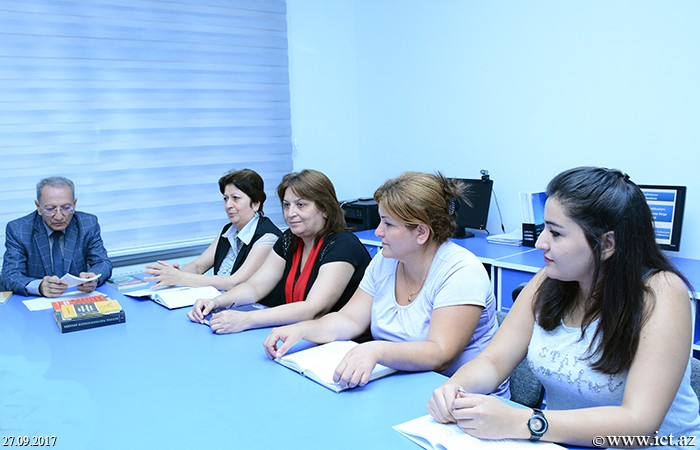NEWS
Cyber anthropology is a science that studies the development of human and technology
Today, at the Institute of Information Technologies of ANAS, the scientific seminar of Department № 9 was held. Chief project engineer, PhD in Technical Sciences, Associate Professor Shafagat Mahmudova presented a report on "Anthropology: History, Concepts and Problems. Cyber Anthropology: A Science that Learns Human Development and Technology Together". She said that social sciences are considered to be one of the fields of study of society and human relations. Anthropology is one of these sciences.
She pointed out that for the first time, the ancient Greek philosopher Aristotel used the term anthropology. The broad explanation of this term is related to the name of the Italian scientist Galeazzo Capellan. Examples of ancient authors in this field are Democritus, Anaximandre, and others.
Mahmudova gave information about the section of anthropology such as morphology, anthropogenic and racism. Morphology is a large section of anthropology learning the human's individual variability. Anthropogene learns the origin, origin and development of human beings, racisim learns the reasons race formation, types, classifications and spheres of races.
The speaker also noted that the main areas of anthropology such as social, philosophical, medical, economic, psychological, cyber, legal, physical, judicial, cultural, biological anthropology have been developed.
Then S.Makhmudova informed about cyber anthropology. She stated that cyber anthropology is a science that studies people in virtual society and in the network environment. She also learns the structure, dynamics of cyber anthropology, the vanguard orientation, and the nature of virtual societies and cyber cultures. French scientist Julyen Lametri, Canadian scientist Makklyuen, Russian scientist Vladimir Vernadsky's ideas are widely used in this field of science.
The speaker also spoke about the problems of cyber anthropology. According to her, the study of sociotechnology systems involving people and technologies, the study of digital technologies such as the forms of material culture, and other issues are one of the problems of cyber anthropology.
The speaker said that anthropology, which deals with comparable dimensions of the human body and its parts, is also called anthropometry. By using mathematical formulas, the dimensions of the human body and its dynamics can be estimated using anthropometric measurements.
Mahmudova noted that for the first time anthropometric researches were conducted in Azerbaijan by Russian scientist N.I.Anserov. She noted that under her leadership a commission called "Study of Azerbaijani society" was created.
The speaker provided information on the identification of race and ethnicity based on illustrations using anthropometric indicators. She said it is possible to gain information about human’s age, gender, ethnicity, and race according to her/his face. In recent years, the number of researches on identification systems based on the various biometric features of human beings is rapidly increasing. While there is considerable research in this area, the number of methods and systems that determine the identity of a person to any known racial or ethnic group is quite small. She also underlined that scientific researches were carried out at the Institute of Information Technology of ANAS in the field of human race and ethnicity.
© All rights reserved. Citing to www.ict.az is necessary upon using news











